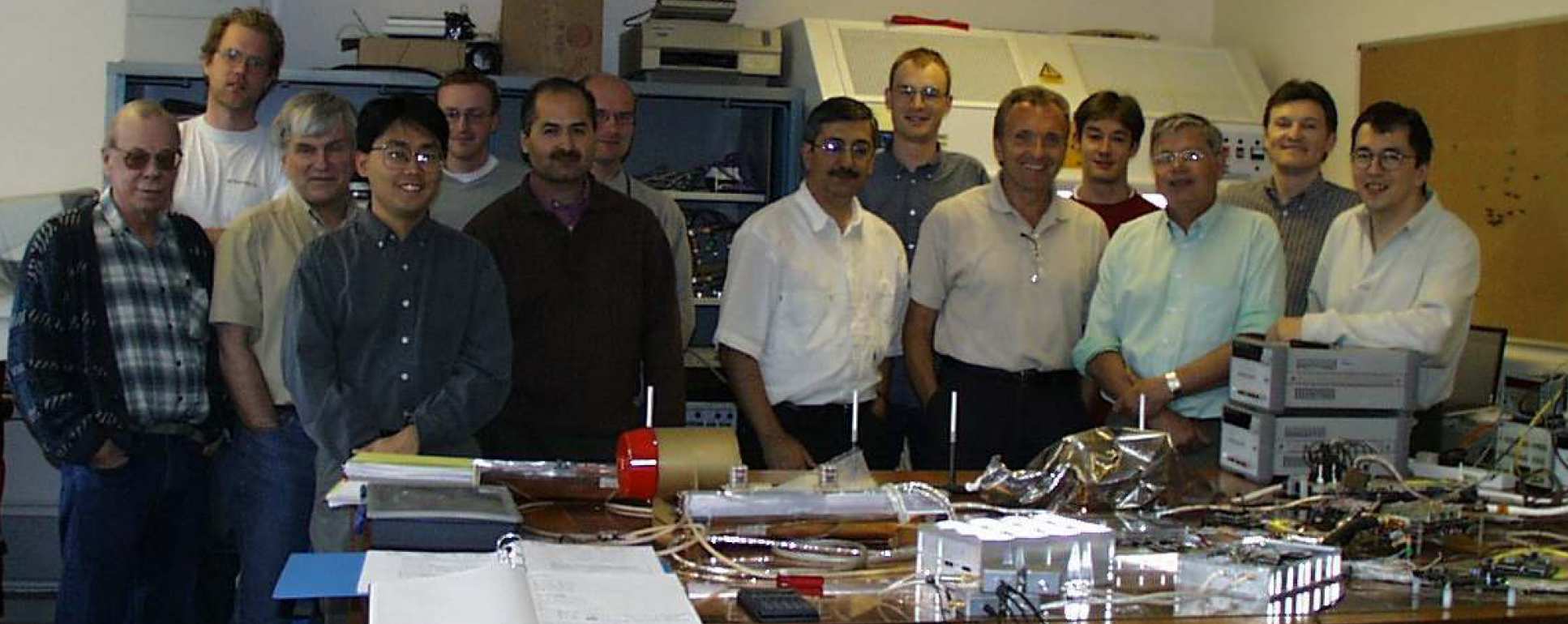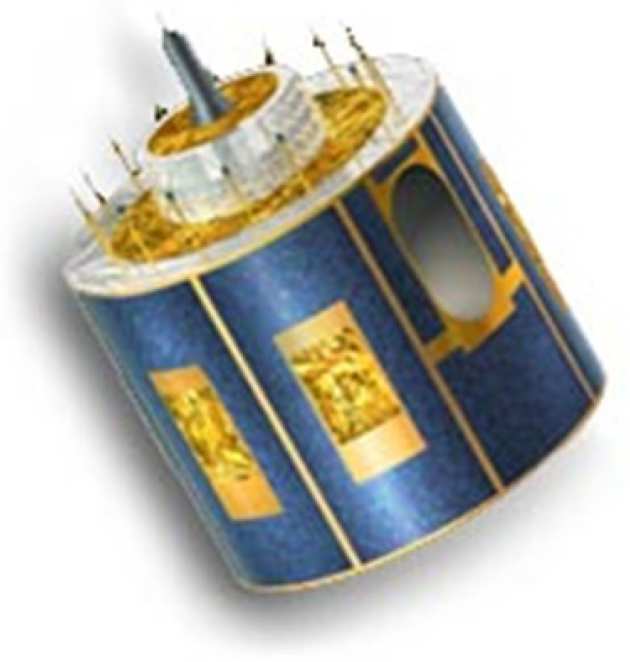A Major Milestone for the Rosetta Mission Completed at Imperial College
A major milestone in the group's involvement in the Rosetta International Cometary Mission was successfully completed in the first week in May, when all the partners in the Rosetta Plasma Consortium (RPC) came to Imperial College with the Engineering Models of their instruments for the first complete test of the RPC group of instruments. The Imperial College team, designing and building the Plasma Interface Unit which brings together the data from five different instruments, were in charge of the integration tests, intended to ensure that all the RPC instruments could work together in the Rosetta spacecraft. The complexity of the project is illustrated by the presence of 14 engineers and scientists from nine different countries (Sweden, Germany, Austria, USA, France, Norway, Finland, Hungary and the UK), representing scientific institutions in the suddenly overcrowded Rosetta Laboratory.
 As the smiles show, the tests were successful; now the RPC instrument complement, together with its extensive test equipment, is being transported to ESTEC, Noordwijk, the Netherlands, for further Electromagnetic Compatibility tests. Delivery of the whole RPC package for integration into the Rosetta spacecraft will take place in Alenia Aerospazio, Turin, Italy, in early June. The Imperial College staff involved in the Rosetta mission (Chis Carr, Chris Lee, Trevor Beek, Paul Howarth and Michael Ludlam) had worked very hard to ensure that the hardware and software of the Plasma Interface Unit, together with its purpose built test equipment were ready for this important milestone.
As the smiles show, the tests were successful; now the RPC instrument complement, together with its extensive test equipment, is being transported to ESTEC, Noordwijk, the Netherlands, for further Electromagnetic Compatibility tests. Delivery of the whole RPC package for integration into the Rosetta spacecraft will take place in Alenia Aerospazio, Turin, Italy, in early June. The Imperial College staff involved in the Rosetta mission (Chis Carr, Chris Lee, Trevor Beek, Paul Howarth and Michael Ludlam) had worked very hard to ensure that the hardware and software of the Plasma Interface Unit, together with its purpose built test equipment were ready for this important milestone.
André Balogh 8th May 2000
GERB-2 Flight Instrument Undergoing Calibration in the EOCF
 GERB-2, the second of a series of GERB (Geostationary Earth Radiation Budget) flight instruments, is currently undergoing calibration in the group's Earth Observation Characterisation Facility (EOCF) here at IC. The GERB instruments are slated to fly on the Eumetsat's new Meteosat Second Generation (MSG) satellites, illustrated in the artist's impression on the right). This particular instrument will probably fly on MSG-1 which is currently expected to be launched in July next year.
GERB-2, the second of a series of GERB (Geostationary Earth Radiation Budget) flight instruments, is currently undergoing calibration in the group's Earth Observation Characterisation Facility (EOCF) here at IC. The GERB instruments are slated to fly on the Eumetsat's new Meteosat Second Generation (MSG) satellites, illustrated in the artist's impression on the right). This particular instrument will probably fly on MSG-1 which is currently expected to be launched in July next year.
The calibration activity is an intense, around-the-clock operation expected to last until June 20th. It is run by 8 SPAT team members, working 12 hour shifts, supported by a similar number of staff from Rutherford Appleton Laboratory, where the instrument was developed. The calibration will include the following:
- Measure the instrument's response to a number of calibrated radiometric sources, supplied by the National Physical Laboratory
- Measure the instrument response as a function of wavelength and intensity
- Characterise and measure the in-flight calibration source
- Measure the point-spread-function of each of the imaging instrument's 256 pixels.
Preliminary results indicate that the instrument is operating perfectly.
At least one more GERB instrument will be calibrated in the EOCF. For more information on the EOCF, GERB or MSG follow the above links.
Steve Kellock 19th May 2000